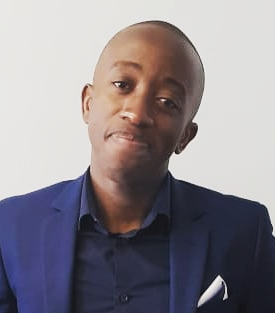81% access to post-school opportunities for IkamvaYouth’s class of 2010 More than half return as tutors and mentors for the next generation

Above: Happy matrics from the Gauteng celebrate their registration
Less than 10% of all South African youth access tertiary education (SAIRR study, 2009), and 41.6% of 18-24 year olds are not in education/training or employment (CHET,2009). It is no doubt largely those children living in poverty and attending under-resourced schools, as opposed to middle class children, whose reality is largely reflected in these statistics.
Yet 81% of IkamvaYouth’s passing matriculants have accessed post-school placements in 2011. This is despite the fact that the far majority of IkamvaYouth’s learners’ caregivers are unemployed, disabled or deceased. They have not let poverty and challenging home environments prevent them from enrolling at institutions including UCT, Wits, UKZN, UNISA, DUT, UWC, CPUT, to study fields such as Environmental Science, Electrical Engineering, Psychology, Business, Nursing, Computer Science, Social Science, Journalism and Physiotherapy.
68 learners from Khayelitsha, Ebony Park, Cato Manor and Molweni sat the examinations at the end of last year and 59 passed. Here are the matric results per province:
· 85% pass in Western Cape (of whom 48% achieved bachelor and 39% diploma)
· 85% in KZN (of whom 50% achieved bachelor and 45% diploma),
– 94% in Gauteng (of whom 63% bachelor and 25% diploma).
42% are now at university, 38% at colleges, 6% at technikons, and 6% have been awarded learnerships. These figures exclude the learners who failed and one learner who we are struggling to make contact with. Each of the 9 learners who failed will remain in the programme and retake their grade 12 exams, together with an additional 3 learners who have chosen to retake and improve their results.
IkamvaYouth instills a culture of learning which fuels the desire to achieve. It also encourages these learners to pay-it-forward and 51% will be volunteering at their branches to inspire the younger learners to emulate their successes. “IkamvaYouth has instilled a sense of determination and self-belief, and young people from township communities are truly being the change”, says Thobela Bixa, an ex-learner who is studying for his Masters in Chemistry at UCT. He pays-it-forward at the Makhaza branch and now sits on the organisation’s board of directors.
Ikamvanites all over the country are taking their future into their own hands. A person with a degree can earn almost five times more than someone without matric (CHET, 2009), and Mandela was spot on when he said “It is through education that the daughter of a peasant can become a doctor, that a son of a mineworker can become the head of the mine, that a child of farm workers can become the president of a great nation.”
IkamvaYouth is thrilled to report that this year its two newest branches – Nyanga and Masiphumelele – will have grade 12 cohorts for the first time, and is looking forward to achieving similarly excellent results with many more learners in 2011 and beyond.
|
NATIONAL FIGURES
|
|
||
|
|
Number of students
|
Percentage
|
|
|
Students who sat matric
|
68
|
|
|
|
Number of passes
|
59
|
86.76
|
|
|
Number of fails
|
9
|
13.24
|
|
|
Students that can’t be traced
|
1
|
1.47
|
|
|
Students retaking at the end of the year
|
13
|
19.12
|
|
|
No placement
|
7
|
10.29
|
|
|
Placements
|
47
|
81.03
|
|
|
Matrics excluding un-tracables and failed matrics
|
58
|
|
|
|
Post-school placements exc non-traceables and failed matrics
|
|
81.03
|
|
|
|
|
|
|
|
Of those students who have post-school placements
|
|
|
|
|
University
|
20
|
42.55
|
|
|
Technikon
|
3
|
6.38
|
|
|
College/ institutes
|
18
|
38.30
|
|
|
learnership
|
6
|
12.77
|
|
|
|
|
|
|
|
Paying-it-Forward
|
|
|
|
|
Students returning to volunteer
|
35
|
51.47
|
|

 Lloyd Lungu
Lloyd Lungu